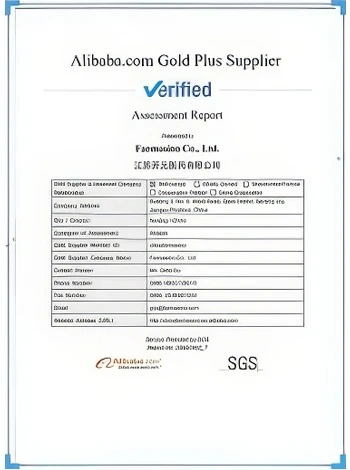



Preparation and Use of 4 Percent Sodium Hydroxide Solution in Laboratory Applications
Understanding 4% NaOH Solution Applications and Importance
Sodium hydroxide, commonly known as caustic soda or lye, is a powerful alkaline compound that plays a pivotal role in various industrial and laboratory processes. A 4% NaOH solution refers to a specific concentration of sodium hydroxide dissolved in water, which is approximately 40 grams of NaOH dissolved in one liter of water. This relatively dilute solution has several applications across different fields, ranging from chemical manufacturing to food processing.
Chemical Fundamentals of NaOH
Sodium hydroxide is an ionic compound composed of sodium (Na^+) and hydroxide (OH^-) ions. It is highly soluble in water, resulting in a solution that exhibits high alkalinity. The pH of a 4% NaOH solution typically ranges between 13 and 14, making it strongly basic. This high pH is responsible for its effectiveness in numerous applications, including neutralization reactions, saponification, and as a cleaning agent.
Applications of 4% NaOH Solution
1. Cleaning Agent
One of the most common uses of a 4% NaOH solution is as a cleaning agent. In both household and industrial cleaning, it is effective in breaking down organic materials, grease, and oils. Its ability to hydrolyze fats and proteins makes it an ideal choice for degreasing kitchen surfaces, unclogging drains, and removing difficult stains. Many commercial cleaners incorporate some level of sodium hydroxide due to its strong cleaning properties.
2. Food Processing
In the food industry, sodium hydroxide plays a role in various processes, such as the production of olives, pretzels, and some types of noodles. A 4% NaOH solution is sometimes utilized in the lye curing process for olives, which helps to remove the natural bitterness and soften the fruit. Similarly, it is used to treat pretzels before baking, giving them their distinctive brown color and chewy texture.
4 naoh

3
. Chemical SynthesisIn laboratories and chemical manufacturing, a 4% NaOH solution is employed in several synthesis reactions. Its ability to provide hydroxide ions (OH^-) makes it a crucial component in reactions that require a strong base. For example, it is often used in the production of biodiesel through the transesterification of fats and oils. Additionally, sodium hydroxide is involved in the production of soap through the saponification process, where fats react with an alkali to produce glycerol and soap.
4. pH Adjustment
In various industrial applications, maintaining the proper pH level is crucial for the efficiency and safety of chemical processes. A 4% NaOH solution is frequently used to raise the pH of wastewater, neutralize acidic effluents, and stabilize chemical formulations. Precise pH control is essential in industries such as pharmaceuticals, pulp and paper, and textiles, where the properties of substances are significantly affected by pH levels.
Safety Precautions
Despite its usefulness, handling sodium hydroxide requires caution. A 4% NaOH solution is still corrosive and can cause chemical burns upon contact with skin or mucous membranes. It is essential to wear appropriate personal protective equipment (PPE) such as gloves, goggles, and lab coats when working with this solution. In case of accidental exposure, immediate rinsing with water for at least 15 minutes is recommended.
Conclusion
The 4% NaOH solution is a versatile and powerful substance with numerous applications across various industries. Its ability to act as a cleaning agent, its role in food processing, its necessity in chemical synthesis, and its function in pH adjustment underscore its importance in both commercial and laboratory settings. However, safety must always be a priority when working with sodium hydroxide, underscoring the need for appropriate handling and protective measures. Understanding the capabilities and risks associated with 4% NaOH can help maximize its benefits while minimizing potential hazards, making it a cornerstone in many chemical processes.
-
Why Sodium Persulfate Is Everywhere NowNewsJul.07,2025
-
Why Polyacrylamide Is in High DemandNewsJul.07,2025
-
Understanding Paint Chemicals and Their ApplicationsNewsJul.07,2025
-
Smart Use Of Mining ChemicalsNewsJul.07,2025
-
Practical Uses of Potassium MonopersulfateNewsJul.07,2025
-
Agrochemicals In Real FarmingNewsJul.07,2025
-
Sodium Chlorite Hot UsesNewsJul.01,2025










